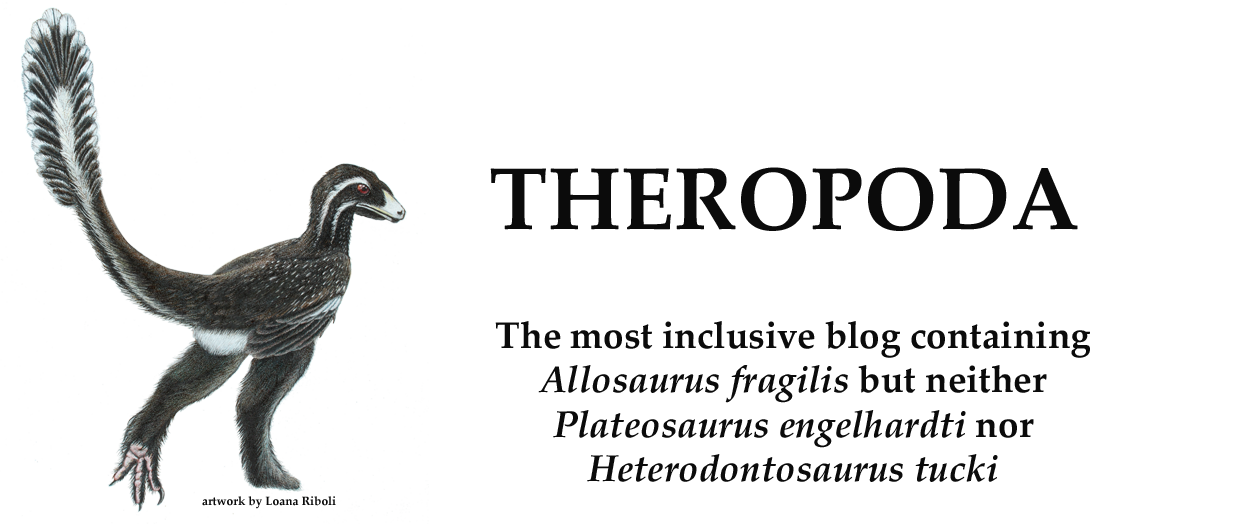In queste ore e giorni si sta svolgendo a Berlino il 74mo Meeting della Society of Vertebrate Paleontology. Io non ho avuto modo di parteciparvi di persona, ma ho molti paleo-amici che sono là presenti. Sebbene io non sia presente fisicamente, sono presente paleontologicamente, in quanto co-autore in due talk all'interno del simposio dedicato ad Archaeopteryx.
Il primo (Lefevre et al. 2014) illustra tre nuovi paraviani dal Giurassico Superiore del Liaoning (Cina), rinvenuti nella stessa formazione di Aurornis. I dettagli di questi nuovi theropodi saranno mostrati ampiamente al momento opportuno.
Il secondo (Dyke et al. 2014, presentato da Tom Brougham) parla delle affinità filogenetiche di Balaur, un taxon che - se siete lettori abituali di questo blog lo saprete - io ritengo essere un membro basale di Avialae e non un Velociraptorinae. Anche in questo caso, i dettagli di questo studio saranno ampiamente mostrati al momento opportuno.
Bibliografia:
Dyke G., Cau A., Naish D., Brougham T., Godefroit P. 2014. Archaeopteryx and paravian phylogeny: the enigma of Balaur. 74th Annual Meeting of the Society of Vertebrate Paleontology, Berlin. Journal of Vertebrate Paleontology, Program and Abstracts, 2014, 123.
Lefevre U., Cau A., Hu D., Wu W., Escuillié F., Godefroit P. 2014. New basal Avialae from the Jurassic of China. 74th Annual Meeting of the Society of Vertebrate Paleontology, Berlin. Journal of Vertebrate Paleontology, Program and Abstracts, 2014, 167.
Lefevre U., Cau A., Hu D., Wu W., Escuillié F., Godefroit P. 2014. New basal Avialae from the Jurassic of China. 74th Annual Meeting of the Society of Vertebrate Paleontology, Berlin. Journal of Vertebrate Paleontology, Program and Abstracts, 2014, 167.

The abstract that interests me the most is the one that claims that Sciurumimus and Juravenator (!?) are non-Coelurosaurs. This contradicts your phylogenetic analysis.
RispondiEliminaWell... the old phylogenetic analyses published on the blog...
EliminaNote that the only published paper by myself including Sciurumimus and Juravenator and based on my dataset had a very small sample among non-coelurosaurian tetanurans: as clearly stated in that paper, the limited sample among non-coelurosaurs may biase Sciurumimus and Juravenator among coelurosaurs.
I'm not against these two taxa outside Coelurosauria.
The claim about Juravenator is especially suprising due to the fact that every other analysis found Juravenator to be a Coelurosaur.
Elimina